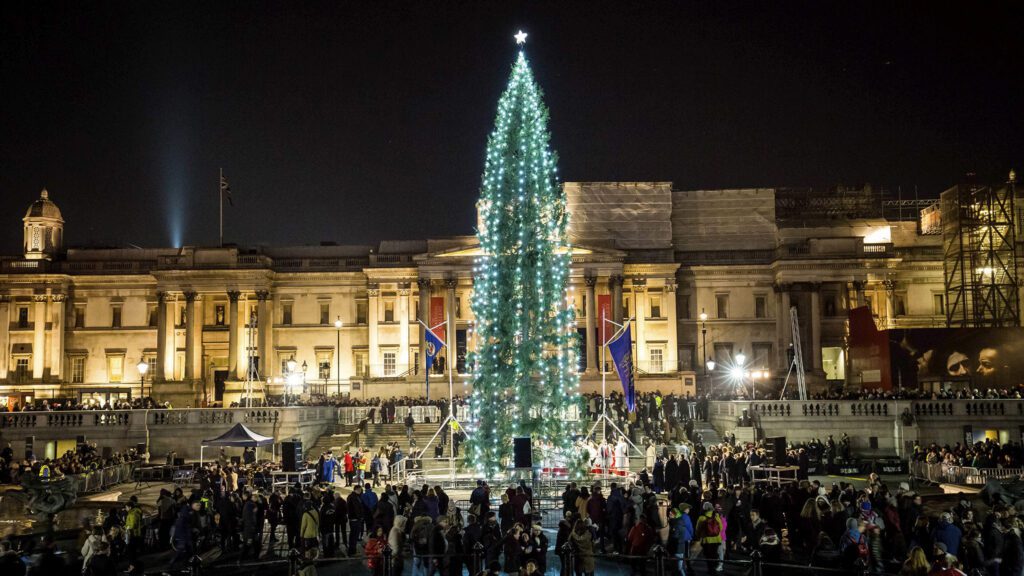If you are in London at this time of year, there is a rather large reminder of Norway firmly planted in the city’s heart. Every year, Norway sends a 50 or 60-year-old Norwegian spruce Christmas tree to be decorated and used as the focal point of the Trafalgar Square Christmas festivities. But do you know why Norway does this?
Every year, Norway sends a Christmas tree to the United Kingdom to thank it for saving Norway during World War II.
Norway’s Christmas Tradition
Hitler made a risky bid to occupy Norway, a strategically important neutral country, a few months into World War II.
On April 9, German troops easily took control of Norway’s ports, from Oslo to the northern port of Narvik.
The seaborne invasion was combined with using a parachute battalion for the first time in warfare, as well as the power of 800 aircraft. The parachute battalion took the Oslo and Stavanger airfields and entered the city, ending Norway’s resistance efforts.
Five days later, Britain and the Allies invaded. The Germans had 25,000 troops in Norway at this point. They resisted five times as many British and French troops. The German offensive in France had advanced by that point, and the British could no longer afford to have troops in Norway.
Norway was captured by Hitler and occupied until the end of the war. However, British resistance aid paved the way for Norwegian forces to flee and fight from abroad.
The Norwegian government and royal family fled to London, where they were granted safe haven to continue ruling Norway while in exile for four years.
Every year, Norway thanks the UK for allowing their government and royal family to flee and for welcoming them in London by delivering a Christmas tree straight from Norway’s forests to Trafalgar Square. (Source: Forces)
The Neutral Ally During the Second World War
Norway was neutral but strategically significant. Whoever ruled Norway would have access to the Atlantic. Capturing the ports of Bergen, Narvik, and Trondheim would give the German Navy an advantage over the allies while also creating gaps in Germany’s economic blockade.
Narvik’s port was particularly important. It was used to export iron ore from Sweden, on which Germany relied to make steel. It was the only way to travel during the winter months when much of the Baltic Sea was frozen.
The allies were adamant that Hitler not take over neutral Norway. However, they had divergent views on achieving this, which could have cost them dearly.
Britain and France agreed to lay mines in Norwegian waters, followed by troop landings in four Norwegian ports. They disagreed, however, on the date of the mining. The delay was disastrous.
The postponement from April 4 to April 8 gave Hitler an advantage. As a neutral country, the Norwegian government was preoccupied on April 8 with protesting British mine laying while Hitler launched his attack.
The disorganized Norwegian government was unable to launch a significant offensive. Despite this, the Norwegian coast defenses successfully sank Germany’s brand-new heavy cruiser, Blücher, in Oslo Fiord.
This slowed the occupation of the capital and explained why Norwegians are grateful to the British today. (Source: Forces)
